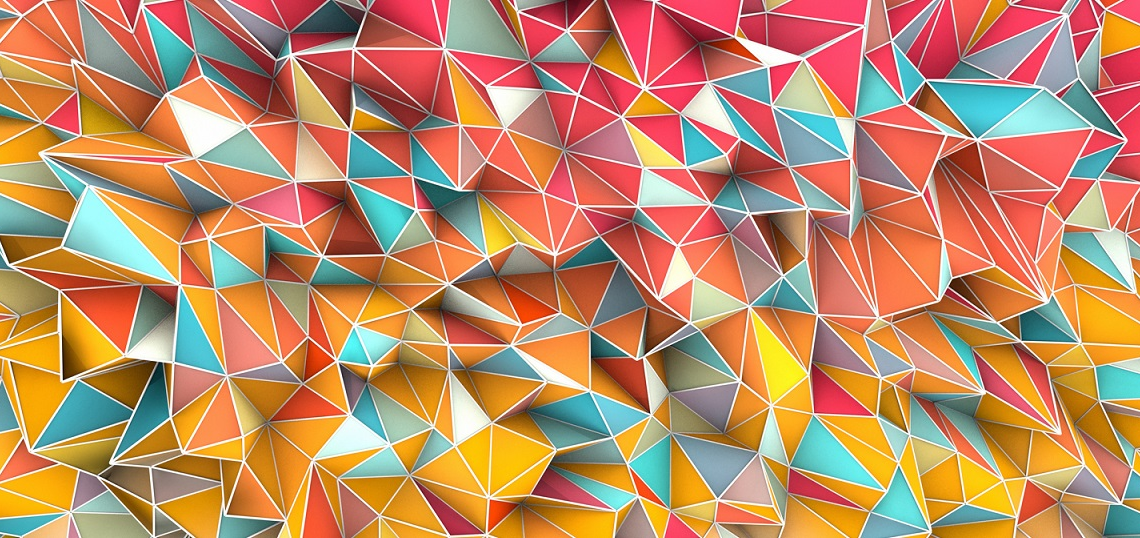
From airplane patterns, to music rhythms, roads and various trackable human habits, online data is used to explore new frontiers in digital arts. The resulting images, figures or pieces are not just condensed information; it’s art. Data is the digital equivalent of a painter’s brush and canvas. Today, data driven art is an ever-growing field, yet there is no doubt that we have barely scratched the surface of what is possible.
Digital art is a term and practice that has been around since late 1950’s and early 1960’s. Early experiments with computer art came around 1965. German artist/mathematician, Frieder Nake created a computer algorithm, enabling the machine to draw a series of shapes to make artwork. The resulting computer-generated drawings were considered to be the earliest examples of digital art. Later on, in 1967, Kenneth Knowlton and Leon Harmon created one of the first truly digital works of art. They took a photograph of a nude woman and changed it into a picture composed of computer pixels, titled Computer Nud.
Yet, not many museums and galleries have focused on digital arts as a serious subject matter until the last 10 years, during which it has really started to change. As technological advances and the resulting digital innovations have started to expand and spread to many areas of our daily lives, the art industry too has decided to consider digital art increasingly seriously. In the wake of this era of digital art, now what exactly is digital art? Should we really pay attention to it?
Digital art is just art made in a digital age, claims the artist working in the field. Looking at their work, it is easy to describe the digital artists. Digital artists on the other hand, are not willing to be perceived any different than artists using conventional means and mediums. They see the distinction in their tools of making arts, within the very context of contemporary art. Digital artists have contemplated, whether they can manage to metaphorically draw, using data as their material. Digital art as we know it today, can be summarized as artists trying to draw with endless data forms and sequences.
Now with digital art, materiality of data and how it can be implemented and transformed into new forms, into art, as well as how it should be interpreted are the matters that occupy the minds of the artists. Many artists use the raw data produced by our societies as their material for art and they seek innovative means of displaying it into an art work. By doing so, art grows away from romantism and approaches to the artistic act of criticism in the digital age we live in.
Data analysis and visualization have become indispensable tools in science and business, but in the hands of a new generation of digital artists, data is undergoing a metamorphosis – from a unit of information into a fascinating, beautiful, and expressive medium, Aaron Koblin, the head of Google’s Data Arts team, explains.[1]
In this respect, technology and technological advances are the key. Complex sensors allow us to collect more data than ever before, while faster computers make it much easier to process, and new software give artists endless options to create their work. Projects that were thought to be impossible not many years ago, are now being realized and on top of that, those projects can be viewed in world-renowned galleries. However, with the abundance of data and exponentially growing technologies, beyond data visualization, new types of creativity in digital arts, using machine learning and artificial intelligence are still waiting to be uncovered.
Art as a Way to Interpret Data
Artists engage with data as both a subject and a medium for their artistic expression. It is believed that data can only be understood in its social, cultural, and economic context and that only then it can constitute a toolkit to the problems of the world via art. To this end, researches, creative experimentations and radical conceptual frameworks must be carried out to interpret today’s information landscape through art and design.[2] As information technology reshapes the world we know, data’s many crucial roles, offering analytical, critical and creative perspectives on the rapidly evolving state of data arts must be examined. The Center for Data Arts at The New School (CDA) approach data representation under four categories, providing a simple, yet broad picture indicating the endless layers of digital arts: [3]
- Qualitative Data:how can we use qualitative data to visualize connections, relationships, and dynamics within a given system?
- Human-Centric, Data-Driven Interface Design: what would a taxonomy of the methods for communicating data look like?
- Data Realities: how can we make use of VR, AR and other emerging technologies to experience data in multidimensional space?
- Multimodal Data Representation: can sound, motion, light, haptic feedback, and physical simulations enhance human experience and understanding of data?
In an age of data abundance and advancement of technologies, digital art needs to expand to be an aid to understand and interpret the social, cultural, and economic aspects of the transformation we go through, and realize its role to shape our society, as I have mentioned in my previous article. The need to preserve the critical approach, while interpreting the world around us via art, and exploit art’s power to impact and transform may reach to new dimensions by the help of digital arts and artists.
References:
[1] https://www.thinkwithgoogle.com/marketing-resources/data-visions/
[2] https://data-matters.nyc/
[3] http://www.data-arts.nyc/

